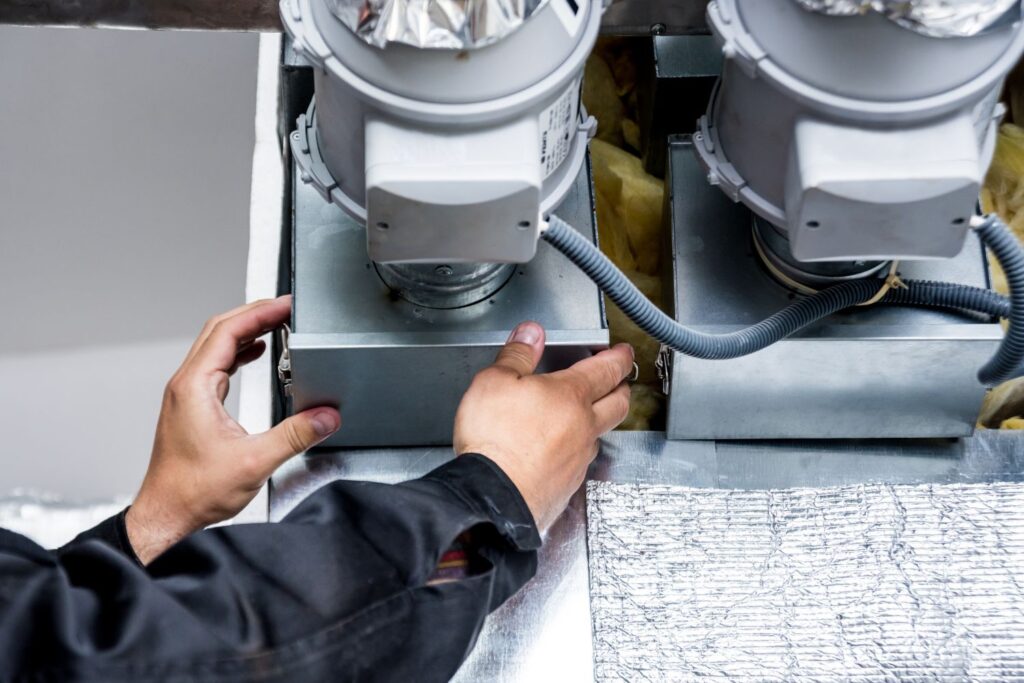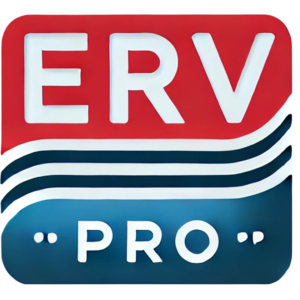Ventilation is key to keeping your building’s air fresh and clean. But in NYC, where space is tight and energy costs are soaring, property owners are often hesitant to make changes, especially when it comes to installing an Energy Recovery Ventilator (ERV). Perhaps you’ve heard that ERVs don’t work in winter, or that they’re only for brand-new buildings. We’re here to set the record straight. Let’s bust some of the biggest ERV myths and show you why upgrading your ventilation could be one of the smartest decisions you make.

Myth #1: ERVs Are Only for New Buildings
Busted! ERVs can be retrofitted into older buildings, too.
Many NYC buildings were designed long before energy efficiency was a concern. This means they often rely on outdated ventilation systems that either waste energy or don’t circulate enough fresh air. Here’s the good news! ERVs can be integrated into existing HVAC setups, helping improve air quality while reducing energy costs, without a full system overhaul.
Pro Tip: If your building has a forced-air system or central HVAC, adding an ERV is easier than you think.
Myth #2: ERVs Don’t Work in Cold NYC Winters
Busted! ERVs are built to handle extreme temperatures.
It is true that ventilation can be tricky in winter because nobody wants freezing air blasting into their building. But ERVs don’t just bring in fresh air; they recover heat from the outgoing air, so your building stays warm while still getting proper ventilation.
In fact, ERVs help prevent dry indoor air, which is a huge plus in NYC’s cold months when heating systems suck moisture out of the air. That means fewer complaints about dry skin, sore throats, and static shocks from your tenants or employees.
Pro Tip: Some ERVs come with frost control features to ensure they operate efficiently even in freezing temperatures.
Myth #3: ERVs and HRVs Are the Same Thing
Busted! While similar, ERVs and HRVs serve different purposes.
HRVs (Heat Recovery Ventilators) only transfer heat, while ERVs transfer both heat and moisture. In NYC’s humid summers and dry winters, an ERV is the better choice because it helps balance indoor humidity year-round.
Think of it this way:
- If you only care about temperature control = HRV.
- If you want better comfort, moisture control, and energy savings = ERV.
Pro Tip: If your building deals with stuffy summer air or dry winter conditions, an ERV is the way to go.
Myth #4: ERVs Are Expensive and Don’t Save That Much Energy
Busted! ERVs pay for themselves over time.
Yes, there’s an upfront cost to installing an ERV. But in return, you get:
- Lower heating and cooling costs (because your HVAC system doesn’t work as hard).
- Improved indoor air quality, which means happier customers, tenants and employees.
- A longer lifespan for your HVAC equipment since it’s not constantly overworked.
Not to mention, ERVs can help NYC buildings comply with Local Law 97, which is all about reducing energy use and emissions. That means you could be avoiding hefty fines down the road.
Pro Tip: Many NYC buildings are eligible for energy efficiency rebates when they install ERVs. So, don’t overlook potential savings.
Final Thoughts: Why ERV Pro is NYC’s Go-To for Better Ventilation
We know that ventilation might not be the most exciting thing on your to-do list. But when it comes to lower energy bills, healthier indoor air, and a more comfortable space, an ERV is one of the best upgrades you can make.
If you’re ready to breathe easier, ERV Pro can help. We specialize in ERV installations for NYC buildings, whether you’re retrofitting an older property or designing a new space.
Want to learn more? Reach out to ERV Pro today and let’s find the best ventilation solution for your building.
